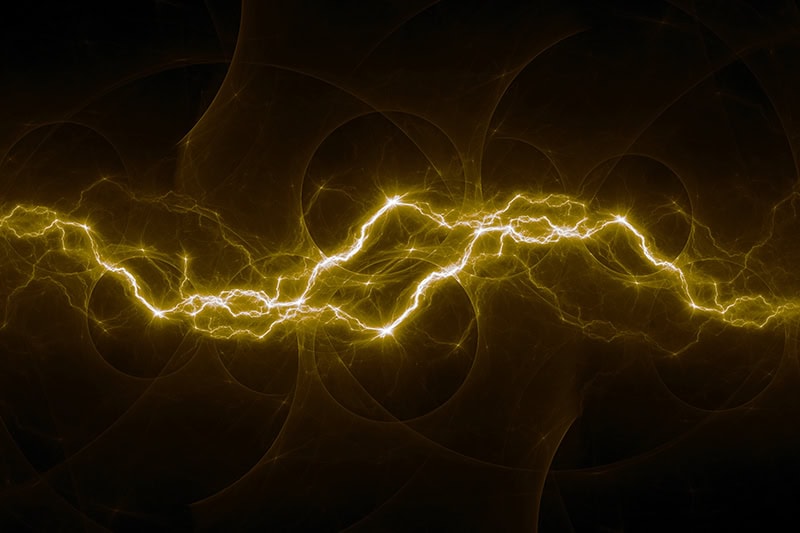Buyer’s Guide to Voltage Monitors

Many homeowners in the Jersey Shore, area have been experiencing a series of power surges—and with them, a growing concern over how to protect their homes’ electrical systems and appliances. Our local electricians at Redmond’s Complete Comfort have been asked whether a voltage monitor is the ideal solution.
We’re here to help break down everything you need to know about voltage protection devices, including how they work, when they’re needed, and what to look for when buying one.
What Is a Voltage Monitor?
A voltage monitor, sometimes called a voltage protection device or voltage monitoring relay, is a piece of electrical equipment that detects unsafe fluctuations in voltage—both overvoltage and undervoltage—and responds by disconnecting power to your appliances or HVAC system before damage occurs.
In short, it’s like a smart bodyguard for your home’s most essential systems.
When the voltage returns to a safe level, the device reconnects power automatically after a short delay, protecting your equipment from repeated surges or rapid cycling.
How Voltage Monitors Work
A voltage monitor constantly checks the incoming voltage to your appliance or electrical panel. When it senses that the voltage has gone outside a safe operating range (208-240 volts), the monitor disconnects the connected equipment to prevent damage.
Most voltage monitors include features like:
- Adjustable Voltage Thresholds: This flexibility helps protect sensitive electronics or HVAC systems from power anomalies that could cause overheating, damage, or a shortened lifespan. Fine-tuning these thresholds ensures the monitor responds appropriately to the conditions in your area.
- Time Delays: This feature prevents equipment from restarting too quickly after a power interruption or voltage correction. This is especially important for compressors and HVAC units, which can be damaged by rapid cycling. The delay—usually adjustable from a few seconds to several minutes—gives your system time to stabilize before resuming operation.
- LED Indicators: These monitors often include multiple LED lights that provide visual feedback at a glance. They may show normal operation (steady green light), overvoltage or undervoltage faults (red or yellow indicators), and delay countdowns before the system powers back on.
- Built-In Relays: Internal relays disconnect power when voltage readings fall outside safe parameters and reconnect it once stability is restored. These relays act like smart switches, helping to prevent damage without requiring manual intervention.
Depending on the model, these devices can be installed directly at your HVAC unit, individual circuits, or main electrical panel. Some may even have Wi-Fi connectivity for remote monitoring.
Why It Matters to Install a Voltage Monitor
Power surges and voltage fluctuations don’t just cause lights to flicker—they can seriously damage your HVAC equipment and sensitive electronics. A voltage monitor acts like a gatekeeper, disconnecting power during unsafe conditions and restoring it when it’s safe, protecting your home’s most essential systems.
But here’s why it’s especially important for your HVAC system:
- HVAC Systems Are Sensitive to Voltage Swings: Today’s heating and cooling systems—especially high-efficiency models—use sensitive electronics like inverter boards that even minor voltage anomalies can damage. These boards control the speed and output of compressors and fans and are often the most expensive components to repair or replace.
- Voided Warranties and Reduced Efficiency: Operating HVAC equipment outside its designed voltage range (typically 208–240V) can decrease system efficiency and, more critically, void the manufacturer’s warranty. Most warranties don’t cover damage caused by electrical surges or brownouts, leaving homeowners on the hook for costly repairs.
- Unit-Specific Protection Matters: Not all voltage monitors are the same, and not all are suited for HVAC applications. It’s important to choose a model specifically designed to match your HVAC unit’s voltage and amperage. Using a generic or underpowered device may fail to protect your system properly, or worse, cause damage of its own.
In short, installing the right voltage protection device isn’t just a precaution—it’s necessary to extend the life of your HVAC system, maintain its efficiency, and keep your warranty intact.
What to Look for in a Voltage Monitor
Not all voltage protection devices are created equal. Here’s what to consider when shopping for one:
1. Voltage Monitor Range Compatibility
Make sure the monitor supports the voltage range used by your system (e.g., 120V, 208V, or 240V). If you’re protecting a large appliance or HVAC unit, check the specific operating voltage required.
2. Voltage Monitor With Adjustable Settings
Some monitors allow you to customize the overvoltage and undervoltage cutoff points. This can be especially useful in neighborhoods around Jersey Shore, where voltage fluctuation is common, but not always extreme.
3. Relay Type and Load Capacity of Voltage Monitor
Look at the relay specifications to ensure the device can handle the current draw of the equipment it’s protecting. Some relays are built for light-duty use, while others are rated for larger systems like air conditioners or mini splits.
4. Time Delay Voltage Monitor Feature
This feature prevents the device from immediately reconnecting to power after a short surge or brownout, allowing voltage to stabilize before turning equipment back on. A delay of 3–5 minutes is typically recommended for HVAC systems.
5. Ease of Voltage Monitor Installation
Some monitors are plug-and-play, while others require professional wiring. It’s best to have a licensed electrician or HVAC technician handle the installation for larger systems or whole-home protection.
Common Types of Voltage Protection Devices
You’ll find different types of devices depending on your needs:
- Plug-In Voltage Monitors: Great for small appliances, computers, and TVs.
- HVAC Voltage Monitors: Specifically designed to protect heating and cooling systems.
- Whole-Home Voltage Relays: Installed at the panel level to protect your entire home’s wiring and circuits.
Voltage Monitor Installation Tips From Redmond’s Complete Comfort
While homeowners can install some simple plug-in models, we always recommend working with a licensed professional for anything involving your electrical panel, HVAC unit, or major appliances. Incorrect installation can render the device ineffective—or worse, create new electrical hazards.
At Redmond’s Complete Comfort, we offer expert guidance and professional installation for a wide range of voltage monitors and voltage protection devices. Whether you’re looking to protect a single appliance or your entire electrical system, we can help you choose the right equipment and ensure it’s installed safely and correctly.
Is a Voltage Monitor Worth It?
Absolutely. For a relatively low cost, a voltage monitor can save you thousands in potential damage and extend the life of your expensive appliances. In areas with unstable power or frequent surges, it’s no longer just a luxury—it’s a wise investment in long-term home protection.
If you’ve noticed your lights flickering, breakers tripping, or HVAC equipment acting up after a storm, it may be time to consider installing a voltage protection device.
Need Help Choosing the Right Voltage Monitor?
With a voltage monitor, you can stop worrying about your appliances, HVAC system, or home electrical systems, despite the recent power surges we’ve had around Jersey Shore, PA.
Not sure which kind is best for your home? Redmond’s Complete Comfort is here to help. We’ll walk you through your options and recommend the best voltage monitor based on your needs, budget, and local power conditions.
Contact us today at 570-858-0035 or request service online to schedule a consultation or get a quote for your home.
